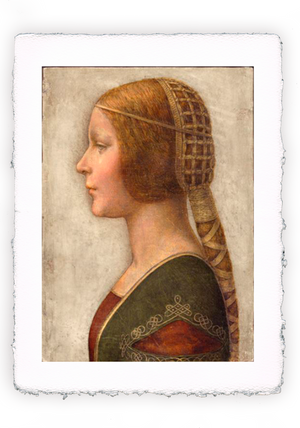
Women and painting, Antonietta (or Antonio) Brandeis

The Hungarian historian Arnold Hauser wrote a valuable History of Art in which he considered art as a result of the historical and social context. It would be interesting to integrate his idea by adding an important element: the woman.
Women in art are mentioned in newspaper articles on March 8, citing Artemisia Gentileschi (1593-1654) and Sofonisba Anguissola (1532-1625).
Really a little bit.
No Academy
Until 1875, in Italy, women they did not have the right to art education. Later, obviously with precise distinctions: women were used as models together with men, but they could not participate in “nude” lessons, because it was considered “indecent”.
Antonietta Brandeis was born in Miskovice in Bohemia on 13 January 1848. The first news reports Antonietta as the “pupil” (the men are pupils and the women pupils) of the painter Karel Javurek.
After the death of her father, her mother Giuseppina Dravhozvali marries the Venetian Giovanni Nobile Scaramella and Antonietta arrives in Venice.
Here Antonietta is one of the very first women admitted to the Venetian Academy of Fine Arts. Not being able to attend figure courses (which include nudes), she follows the lessons of Domenico Bresolin for landscape, Marino Molmenti for painting and Federico Bagna for perspective.
Antonietta / Antonio
Woman or man the results speak for themselves: Antonietta is skilled, meticulous and very good. Wins awards and mentions. He is among the most awarded students of the Academy.
Brandeis chooses to enter the tradition of landscape painters and foreign collectors begin to take an interest in her ... or him. In fact, Antonietta spread her work as "Antonio Brandeis".
Reliable scholars explain that he made the choice to pretend to be a man to avoid praise due only because ... "woman" (that is: but look ... a woman who paints like this ... how good!); I am inclined to think the opposite: if the picture is painted by a man it is something serious, if it is painted by a woman it is a hobby.
Antonietta (or Antonio) exhibited numerous works throughout Italy and in 1880 he presented himself at the Melbourne International Exhibition with three paintings.
Painter and wife
In 1897 he married Antonio Zamboni, a Venetian knight and officer. Marriage forced her to reduce her artistic activity, while continuing to exhibit in Rome and Florence.
In 1909 Antonio Zamboni died and Antonietta settled in Florence, remaining active and prolific until March 20, 1926, the day of her death.
Executing her will, Antonietta Brandeis leaves all her possessions and paintings to the orphans, including the money to be able to frame them.
the other half of the sky
Antonietta's expertise and skill is evident. He often repeated and repainted the most successful subjects to improve them.
If she had really been "Antonio" and not Antonietta, would her notoriety have been equal to her contemporary Giovanni Fattori?
I am convinced of one fact: the History of Art (and beyond), relegating the role of women to the margin, has lost "the other half of the sky" (angering Andrea Camilleri who said: "... I'm not the whole universe!")
And today we can only fantasize about what intuitions, beauties, masterpieces and what universe they could have given us.


Leave a comment